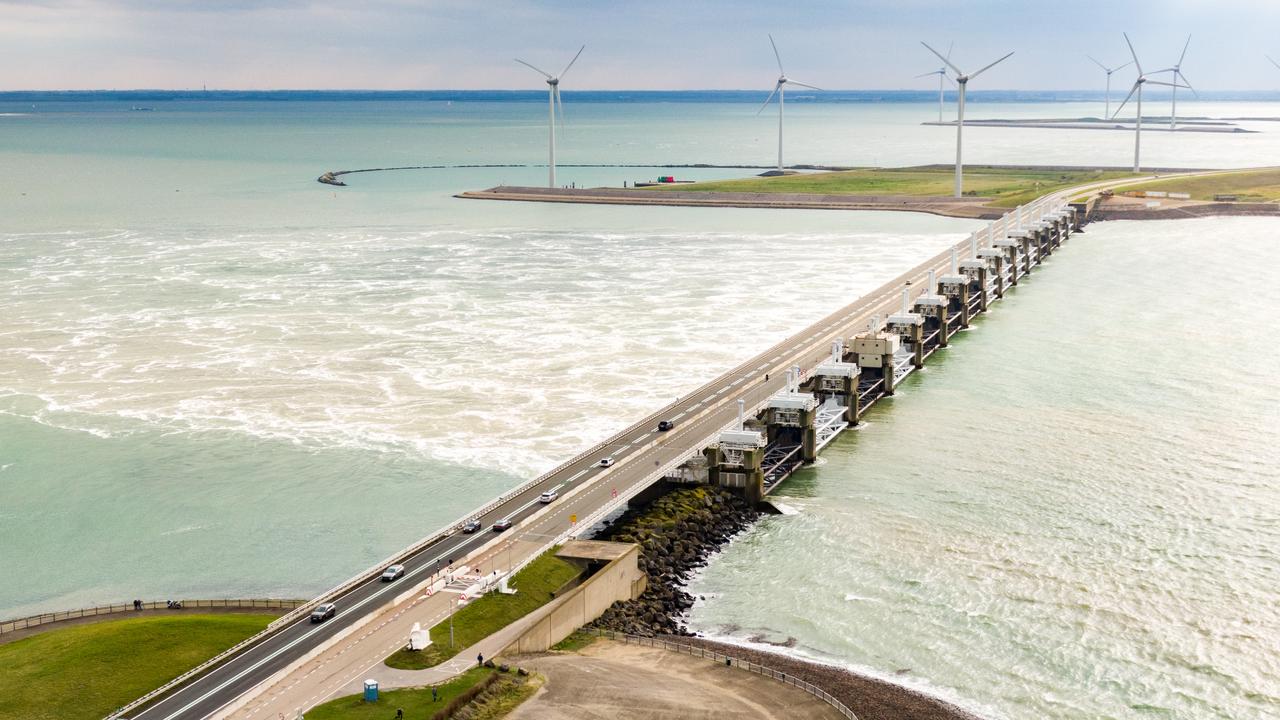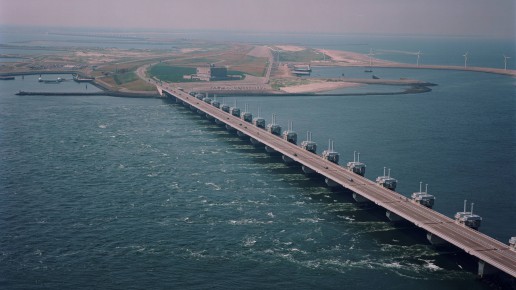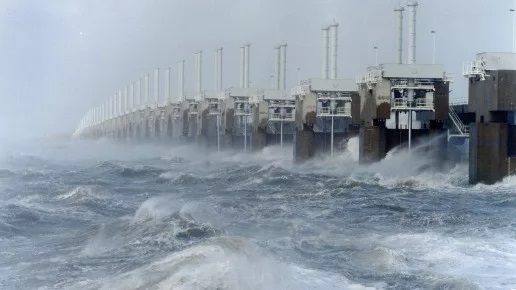Oostersceldekering, la diga olandese — The Dutch Dam


Fa parte del Piano Delta, il più grande sistema di protezione dalle inondazioni in tutto il mondo. La Oostersceldekering è lunga circa 9 chilometri. Con un costo complessivo di 2,5 miliardi di euro si è riusciti a proteggere un territorio a rischio idrogeologico. È una struttura di lunghezza totale di lunga 25 km con pilastri alti 30 metri e con un peso totale di oltre 20000 tonnellate. Al raggiungimento del livello critico del mare le due paratoie, di lunghezza 210 metri e altezza 22 metri e costituite da 15000 tonnellate di acciaio, vengono sbarrate con l’ausilio di un sistema centralizzato. In ordine di grandezza, si posiziona al primo posto la diga dell’Oosterscheldekering della Schelda che è formata da 65 piloni e 62 paratie che vengono alzate quando il livello del mare raggiunge l’altezza critica.
OOSTERSCHERSCHELDEKERING #Watersnoodmuseum #Buildingcue #Deltawerkwn #tempodacqua #thetimeofwater
After the disaster of 1953, work began on the largest flood protection system in the world. With the name of Piano Delta, Holland could boast of this disk consisting of three permanently closed structures, four barriers to face the storms and six dams. A structure of such enormous dimensions has never been built. The barrier consists of 65 pillars of 30 to 40 meters high and 62 sliders of 42 meters wide and 6 to 12 meters high. That makes the defense barrier (cost 2.5 billion euro) one of the most impressive hydraulic constructions in The Netherlands. The construction of the 9 kilometer long storm surge barrier the “Oosterscheldekering” is a complex and unique project.
A lot of discussion precedes the construction of the barrier. At first, the plan is to close off the Oosterschelde with a solid dam. However, fishermen and nature conservationists revolt against this plan. The Oosterschelde is a unique nature reserve with more than 70 species of fish, 140 species of aquatic plants and algae and 350 species of benthic animals, which live on the sea bed. Building a solid dam would result in this nature reserve suffering irreparable damage. Completely closing off the sea arm means the end of the salt water environment in the Oosterschelde and therefore also the cultivation of mussels and oysters. The protest – with the Oosterschelde Open as battle cry – does not fall on deaf ears. In 1975, the then Cabinet came up with the proposal to build an open barrier that could be closed by means of gates – if necessary. A permeable barrier is much more expensive than a solid dam and thus the Cabinet’s proposal leads to fierce debates. In 1979 parliament approved the plan for the construction of the Oosterscheldekering.


